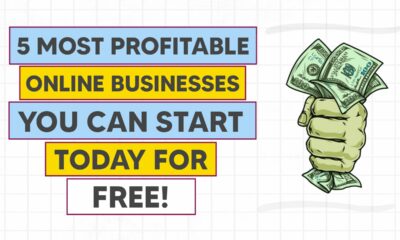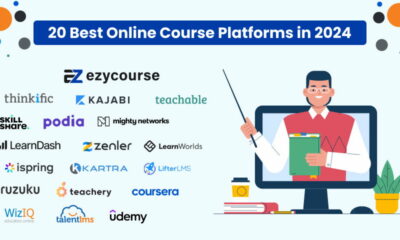AFFILIATE MARKETING
During COVID, Affiliate Marketing Is Emerging As a Cost-effective Channel For Brands

Opinions expressed by Entrepreneur contributors are their own.
You’re reading Entrepreneur India, an international franchise of Entrepreneur Media.
With the outbreak of the pandemic, going for performance-oriented channels has become a prerequisite for stability. Several advertisers are struggling with low marketing budgets and a pressure to drive return on investment (RoI) through limited spends, especially owing to current times. The most common dilemma for companies is to decide where to focus their marketing budgets on, after investing in one’s own in-house paid channels. “Affiliate channels’ often provide desirable solutions, as the performance of such activities can be assessed and paid for. When the budgets are lower, investing on a marketing channel where one gets to pay per lead or pay per transaction, could be the safest bet during the current crisis compared with other marketing channels.
Pixabay
With the ongoing challenges of customer acquisition and the pressure to get RoIs, the advertisers have tried to come up with the online business approaches in order to depend less on offline means.
Despite the evolution of marketing practices and strategies, amid the big quantum of content available online today, brands are finding it difficult to reach out to their target audiences in an effective manner. Taking the current health crisis into consideration, customers are more concerned about health and safety, thereby influencing their choices with respect to financial services such as in the insurance segment, over the others.
This holds especially true for brands operating in niche segments, such as the banking and financial services sector which offer specialized products and services. Their marketing content, essentially, is about communicating “what’ the brand is offering, “why’ the customer must opt for it and “how’ can the customer acquire the same. It’s not easy to convince people to trust someone to deal with their money and life’s savings.
Why companies in the BFSI sector must opt for affiliate marketing
FinTech has transformed the BFSI sector drastically. From payments, loan applications to insurance, almost every service in the banking sector is going digital at a rapid pace. Apps, banking services and products are also updated regularly to enhance user experience, and make financial services easier and more convenient for consumers. The digital shift reflects prominently in the adoption of digital payments as well. A 2019 KPMG report showed that non-cash transactions are growing at a CAGR of 12.7 per cent. The number of merchants accepting digital payments has also skyrocketed, growing from around 1.5 million in 2016-17 to 10 million in 2019.
However, due to COVID-19, investor sentiments are at an all-time low and this is likely to cause severe disruptions in the banking industry all over the world. Banks will now have to regroup their departments and teams to chalk out counter-strategies to maintain good assets and earnings.
To tap into the growing digital opportunity, BFSI brands must leverage innovative marketing strategies in order to increase their sales by targeting the right customers. Working on an affiliate marketing strategy could be one of those options which could aid the financial services sector with cost-effective solutions, while driving up traffic. In an affiliate marketing setup, publishers cannot treat the BFSI brands’ products and services like other commodities.
As all of their offerings revolve around money, it is integral for brands to prioritise generating a need for these services among their target audiences. The key to effective brand communication, in the BFSI domain, is transparency in information delivery. To cater to this marketing requisite, opting for affiliate marketing can prove to be highly useful for the BFSI sector. By signing up relevant publishers as affiliates, BFSI advertisers can reach out to their target consumers in a trust-based ecosystem for communicating their key brand messages.
Affiliate with whom and where?
For affiliate marketing programmes, BFSI brands require those publishers who have the required ingenuity for curating relevant information in the right category of the sector. With everything going online from doorstep delivery of daily groceries through just a click, to getting the health checkup or tests done at home, users are now more aware about such needs. The probability that they will go searching online for services and also transact online is very high. It would be an opportune decision to reach out to the target audience in such a manner, as it is likely to generate faster results and direct interaction with a user looking for a service.
Furthermore, countless other possibilities open as affiliate networks facilitate revenue sharing mechanisms between the service provider and a publisher when one’s link gets clicked. Compared to several other digital marketing options which depend on user accessibility and high costs between corporations for using certain platforms, affiliate marketing’s targeted content is more likely to fetch dividends. The post-pandemic growth reality will be a difficult pill to swallow and affiliate marketing solutions can make the changes positive and palatable. This will not only be an economical option, it will also help companies acquire customers who are looking for a particular service, while simultaneously incentivizing the publisher too. Beyond sales and on-boarding of new customers, the average time spent by an Indian working professional or Internet user has increased multifold due to pandemic. This goes to show that people will continue to look for their necessities online across multiple websites and portals. It shall open up opportunities for brands to increase awareness about one’s services across several sectors without the need to remain confined to one’s own market segment. Below are some of the platforms where companies in the financial sector can join affiliates to target more consumers:
Blogs: Online blogs are one of the most trusted platforms for the BFSI sector. Specialized content publishers who demystify financial services and products such as loans, insurance, credit cards, overdraft protection for consumers, are the most sought-after ones for the BFSI brands in affiliate marketing. They cater to an audience that actively seeks out experts’ advice before making all financial decisions. Bloggers also get an opportunity to drive traffic to specific services offered by different BFSI verticals. Bringing publishers on board who operate in this domain helps the brands drive high-impact marketing campaigns which deliver fast results. Some of the websites that feature such content are Cashoverflow.com and Goodreturns.in.
Business news websites offering guidance on personal finance: Various news portals such as NDTV Profit, CNBC TV-18, etc., feature content that consumers can avail to manage personal finance, insurance policies, etc. These websites are regularly accessed by keen observers on finance and banking, who are one of the primary target audiences for brands in the BFSI sector.
Comparison sites: Comparison sites invite immense traffic of consumers who are interested in getting the right deals in financial services which are most suitable for them from the budget and consumption point of view. Brands dealing with financial services such as personal banking, insurance policies, credit card policies can avail these sites to target potential customers.
Contextual advertising: Contextual advertising is a marketing model where affiliates or publishers can target consumers based on their specific interests. These platforms provide relevant content, targeting a particular set of audience for whom unnecessary features are eliminated based on their past browsing behavior, making it one of the most effective platforms for brands in the BFSI sector. The companies can also get their products featured in specialized content meant to meet specific ends.
E-mail inventories: Brands can supply relevant information to potential and current consumers via newsletters in their email inboxes. Information on latest offers, new updates on products and useful information on services can be relayed to the customers who otherwise find ads, SMS-marketing intrusive and use ad-blockers on their devices. BFSI companies can tie up with content affiliate sites that send out value-based articles and ideas with other exciting information about the brands, promoting more subscriptions and sales.
A win-win for both: the brands and the affiliates
By making the most of the growing digital presence of consumers, affiliate partnerships can prove to be one of the most cost-effective ways for banks and financial institutions to convert consumers online. The fast and approved online transactions help the BFSI brands acquire more control over their businesses than the other conventional marketing practices. Moreover, in creating affiliate marketing campaigns for the brands in the BFSI sector, the publishers also have more opportunities to earn big commissions compared to the other e-commerce campaigns. Brands operating in the BFSI sectors generate more sales and earn more profits on their products and services as compared to the non-financial brands. For every customer gained, the publisher gets an opportunity to earn a couple of times more commission on it than it can from, say, when a consumer buys a stationery product. Big banks pay commission basis the pay-per-scale model. Most financial institutions offer commission of this type to bloggers.
And last but not least, players in the BFSI sectors can get a fair chance to incorporate multiple marketing tactics and test innovative strategies in an affiliate marketing programme without the slightest worry, since rewards are paid only on a performance basis which is well accounted for.
Source link











You must be logged in to post a comment Login